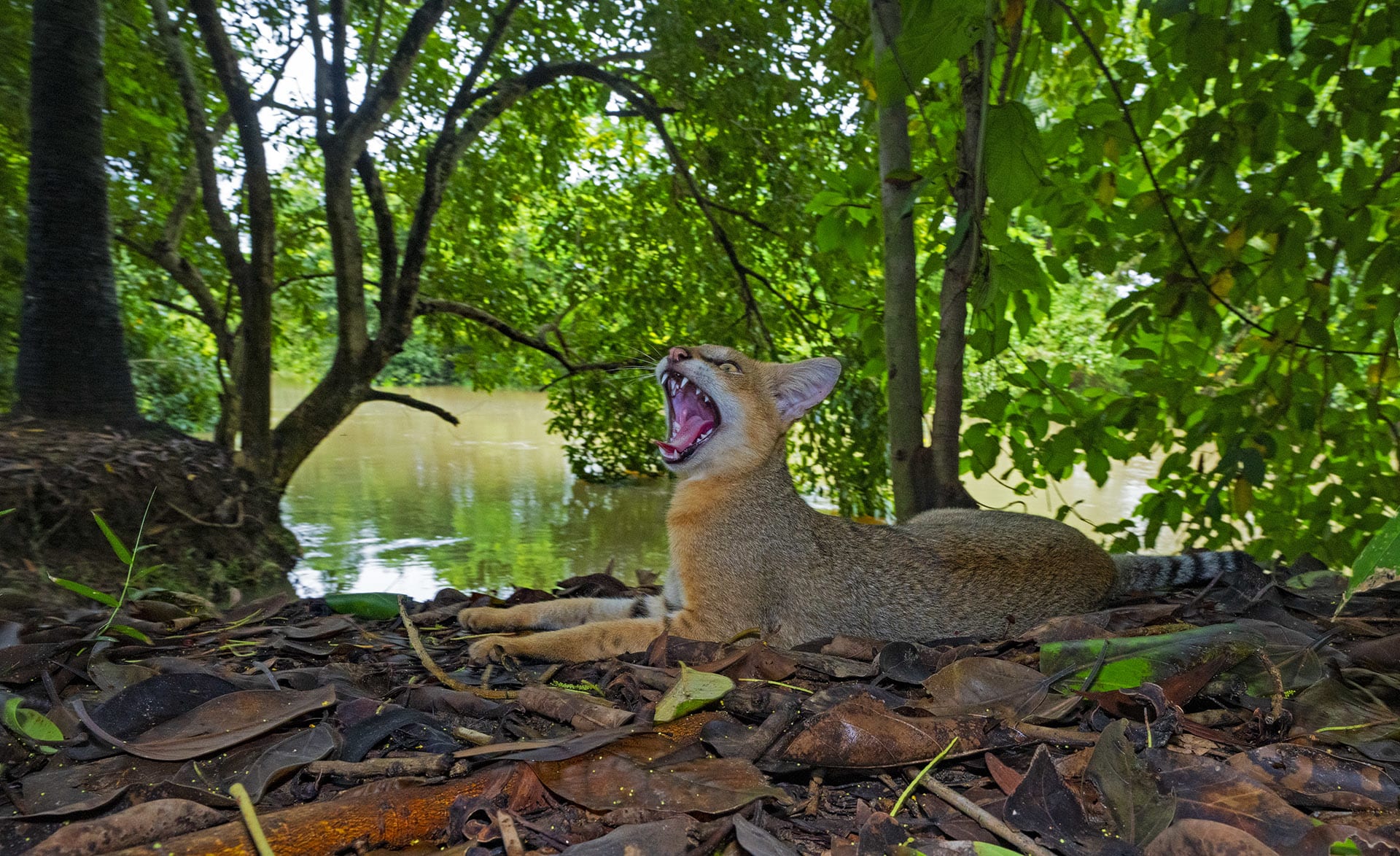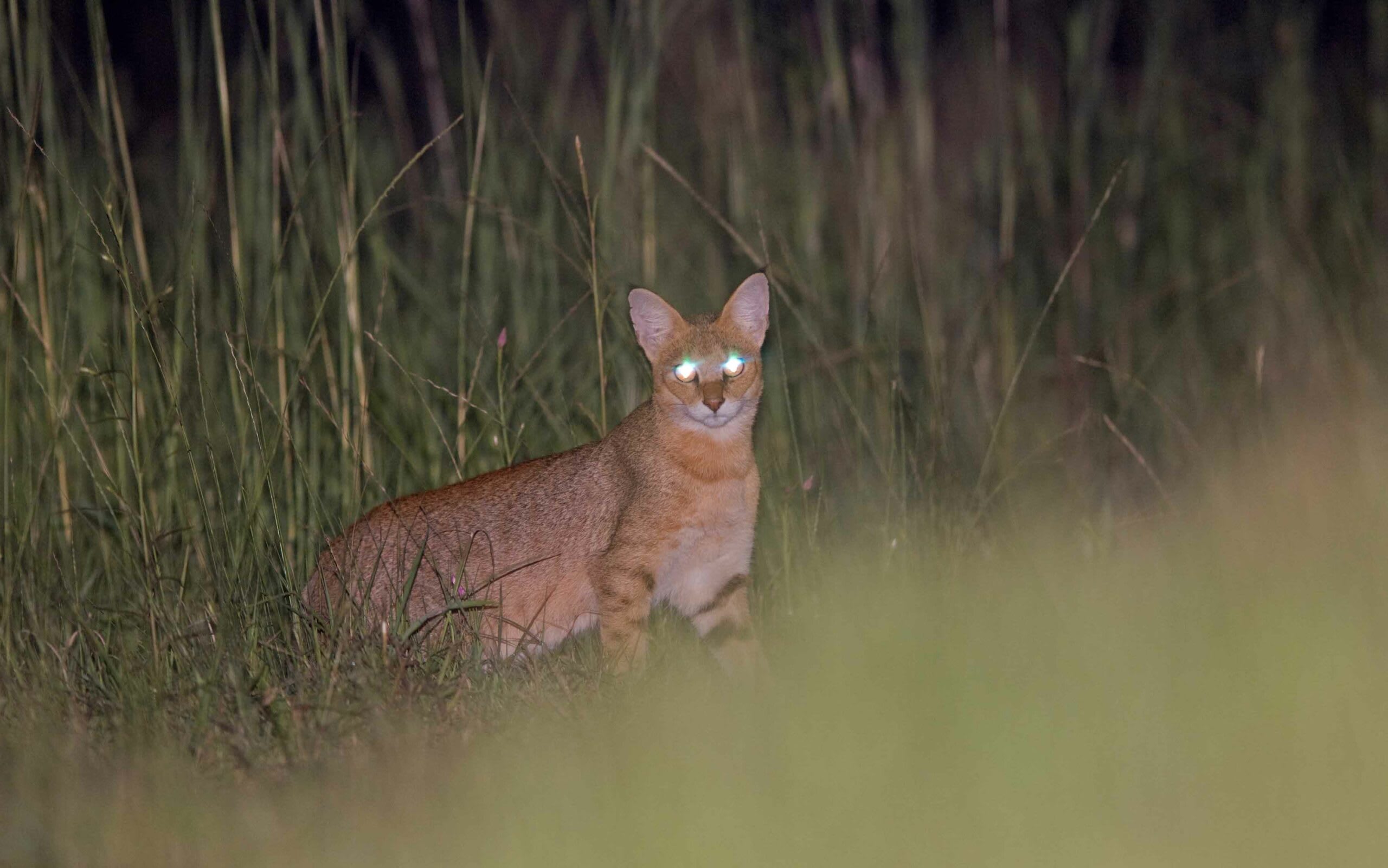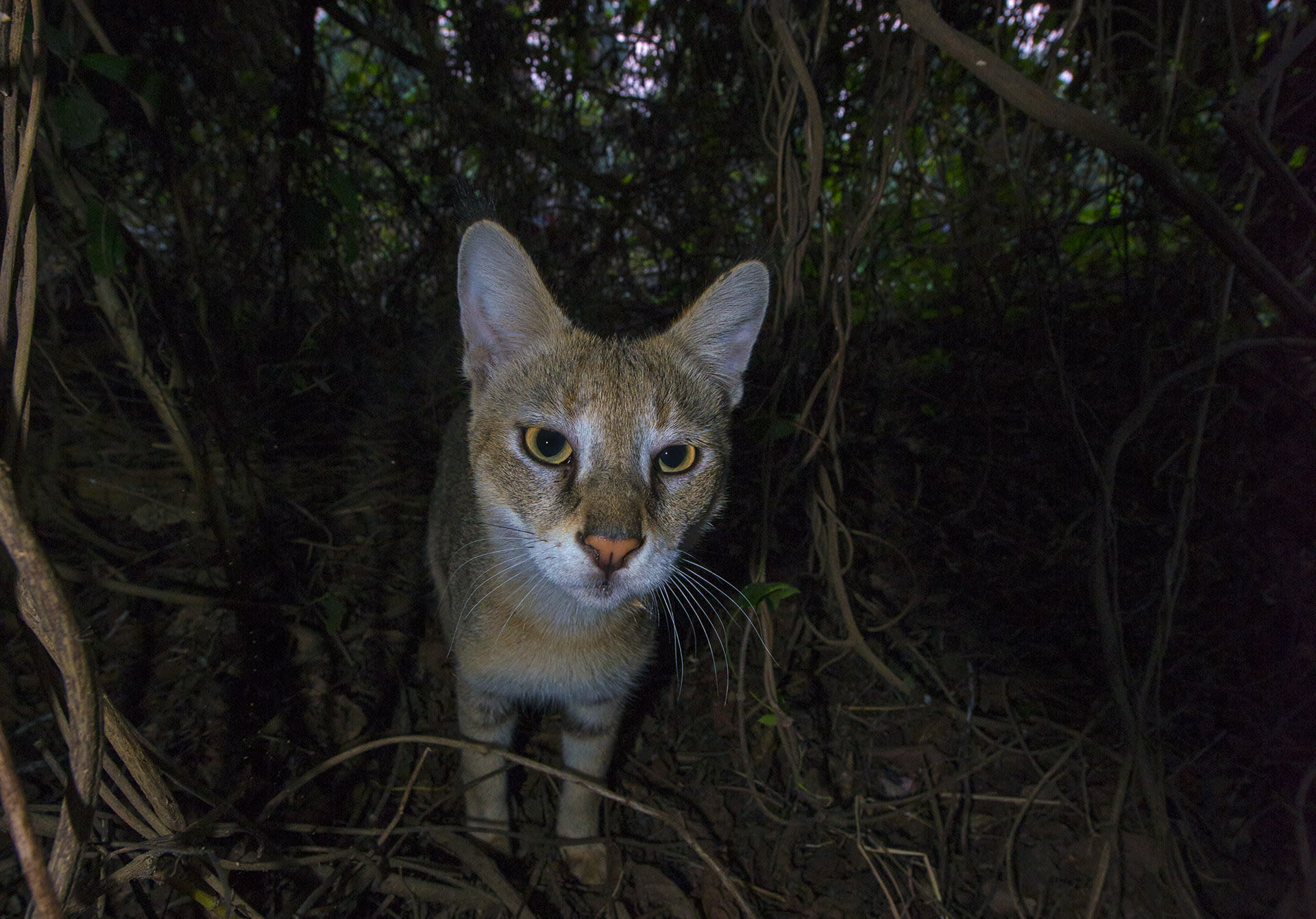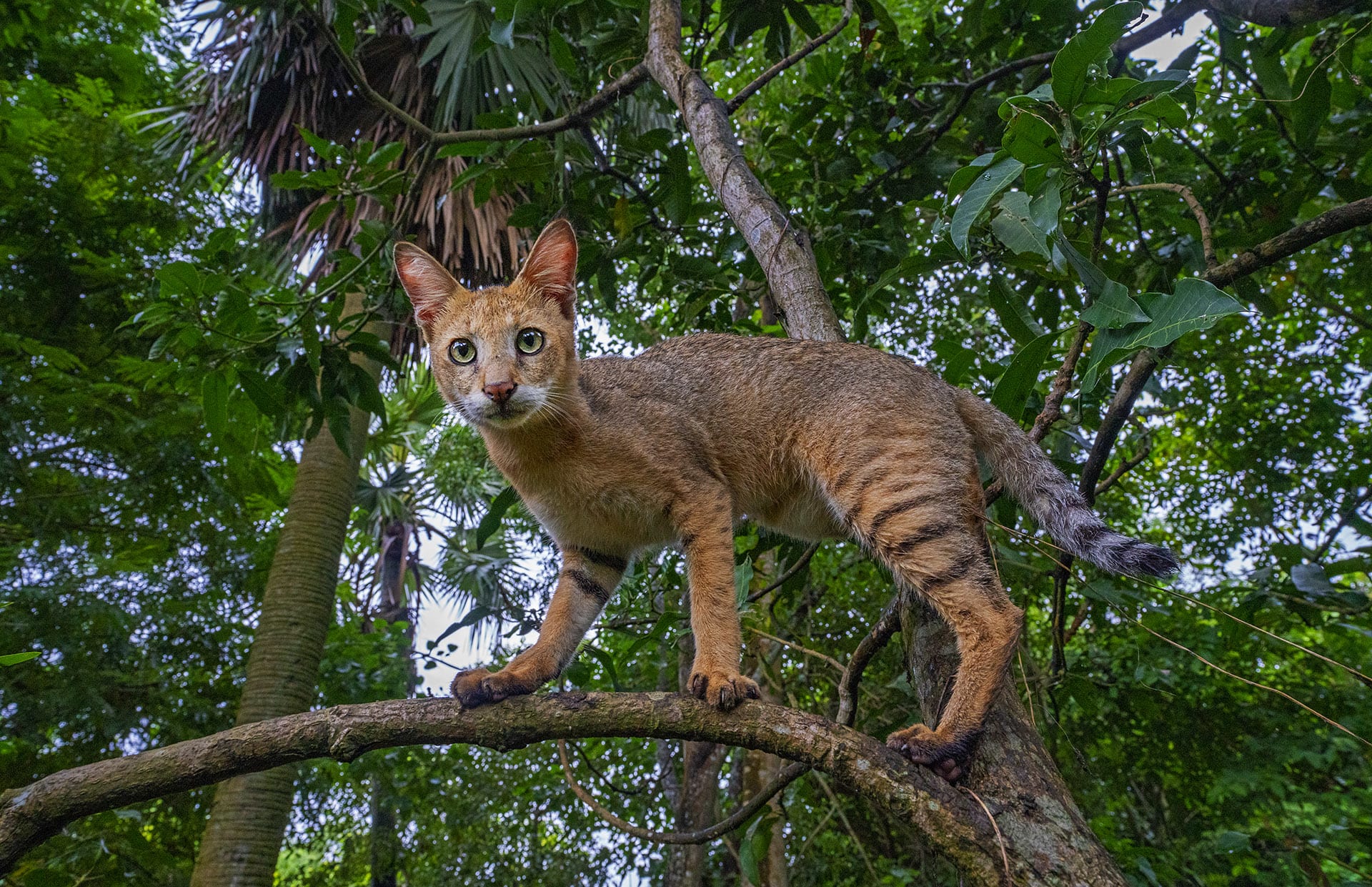The year was 1976, and Dr AJT Johnsingh was returning home from work at the university in Sivakasi, Tamil Nadu, when a farmer-friend presented him with a tiny kitten. It was a jungle cat, “so small, its eyes had not yet opened”, so he took it home, fed it a mixture of milk and beaten egg, and gave it a spot in his little household.
Dr Johnsingh is now a distinguished wildlife biologist and former Dean of the prestigious Wildlife Institute of India, Dehradun, who has published over 200 scientific papers and studied species ranging from elephants and tigers to the Nilgiri langurs and Himalayan ibex. But at the time, he was simply a curious teacher of zoology, with a particular fondness for cats. “At night, it would come and play with our toes,” he said in a phone interview. “So finally, I had to leave it outside the house at night so that we could sleep.”
Dr Johnsingh’s story is unusual because jungle cats are wild felines, diminutive in size, but stealthy, fierce, and skilled predators. According to the International Society for Endangered Cats, they have “a broad but patchy distribution, from the Nile River Valley in Africa to India and southern Asia, and throughout tropical China and Southeast Asia.”
In India, jungle cats are more popularly known for snatching poultry than socialising with humans. In Dr Johnsingh’s case, both were true. “My son was about eleven months old when we had the jungle cat, and they were roughly the same size,” he recalls. “The cat used to wrestle with him, and he would hold the cat by its tail and swing it around. My son had lots of small scratches on his back, but he never drew blood.” Dr Johnsingh also remembers that while playing ball badminton the cat would run after the ball every time it rolled on the ground, just like a pet cat.
One day, when the cat was about seven months old, the zoology teacher woke up to pandemonium on the street. “When I opened the door, I saw the cat with a chicken by the neck,” he said, “Another time, it picked up some baby chicks from my department head’s house, and I had to pay him ten rupees as compensation.”
Shortly after the chick incident, Dr Johnsingh left the cat in the care of his friend while he was travelling and returned to learn that it had escaped. That was the last he heard of his little jungle cat, but he still remembers their time together with fondness. “Such a beautiful creature,” he said. “I wish I could have captured those moments, but I didn’t have a camera at the time.”

Despite their wide geographical range, jungle cats remain elusive creatures in most of the ecosystems they inhabit, primarily because of their stealthy ways. “Jungle cats might be one of India’s most common feline species, but seeing one in the wild is not so common,” says wildlife filmmaker Sandesh Kadur, in a Youtube video for National Geographic, shot in the rocky Deccan Plateau of Karnataka. “Normally, if you see a jungle cat, it’s gone before you can even say ‘jungle cat’.”
Jungle cats are opportunistic feeders that will eat anything they can hunt, says Dr Johnsingh. Their diet includes birds, hares, lizards, frogs, fish, snakes, even waste from garbage dumps. In India, they have been spotted scavenging on the kill of large predators such as the Asiatic lion, reports the IUCN. It also states that “While jungle cats specialise on small prey, they are large and powerful enough to kill young swine, subadult gazelles, and chital fawns”.
![Dr Johnsingh remembers an incident from 1977, when he was researching the wild dog in Bandipur National Park, Karnataka. “I was up in a tree when I saw a jungle cat come near a patch of grass,” he recalls. “I could see it tilting its pinna [outer ear] this way and that, to locate a sound that was in the grass. Then it leapt in the air and pounced on its prey with great precision, using its front paws to hold it down. It is amazing the way they hunt, and it reminded me of the time with my jungle cat.”](https://res.cloudinary.com/roundglass/image/upload/v1639646805/roundglass/bengal-bardhaman-belun-running-blur-dhritiman-mukherjee-scaled_oufoop.jpg)
Dr Johnsingh remembers an incident from 1977, when he was researching the wild dog in Bandipur National Park, Karnataka. “I was up in a tree when I saw a jungle cat come near a patch of grass,” he recalls. “I could see it tilting its pinna [outer ear] this way and that, to locate a sound that was in the grass. Then it leapt in the air and pounced on its prey with great precision, using its front paws to hold it down. It is amazing the way they hunt, and it reminded me of the time with my jungle cat.”

Their appetite for rodents draws jungle cats to agricultural fields and the outskirts of human settlements. This photo was taken near a village in West Bengal, where the jungle cat was regularly spotted. “It seemed quite comfortable with human presence,” says wildlife photographer Dhritiman Mukherjee, “and the humans also seemed quite comfortable with its presence”.

This sentiment is echoed by the scientific paper “The occurrence of small felids in Mudumalai Tiger Reserve, Tamil Nadu”. According to the study by Riddhika Kalle and others, “jungle cat and leopard cat are regular visitors to small livestock inside village homes”. The authors write that “small cats in the region are named as kattu poonai by the local people, including the tribes. Based on questionnaire surveys, the local masses showed no interest in hunting any of these species and do not blame small cats for predation on domestic animals.”

The jungle cat is categorised as a species of “Least Concern” on the IUCN Red List. Still, conservationists worry that habitat loss will impact populations in the future, as many jungle cats live outside protected areas. “Effective conservation of small cats requires detailed knowledge on their current distribution, population status, and ecological requirements,” writes Riddhika and her team in the Mudumalai paper. “Although our understanding of their ecology has increased, comprehensive information at a regional scale in most parts of the country is still lacking.”

One of the reasons for this is the stealthy behaviour of the species. Riddhika explains that “The extreme difficulty in physically observing them and inaccessibility of their habitat” is what makes small cat research difficult. “Their elusive behaviour and rarity make it most difficult to study them in the wild.”

